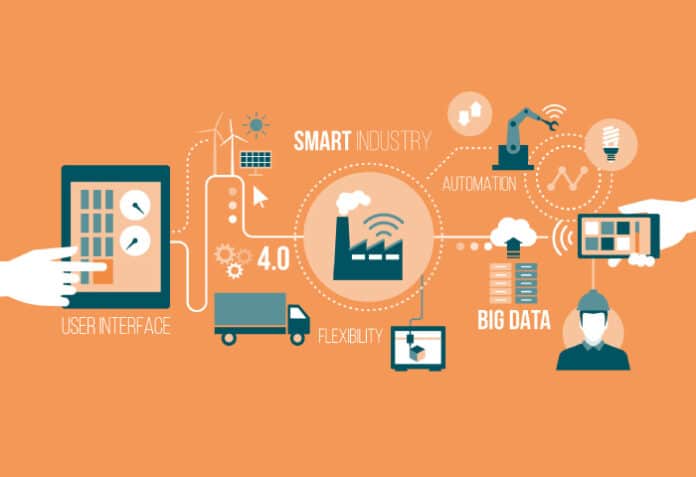The Industrial Internet of Things (IIoT) is reshaping industries and driving efficiencies through the integration of physical and digital systems. Open source applications are a vital component of this transformation, offering cost-effective, customisable, and secure solutions that enable organisations to harness the power of IIoT.
The Industrial Internet of Things (IIoT) is revolutionising the manufacturing landscape, ushering in an era of increased automation, efficiency, and data-driven decision-making. At the heart of this transformation lies the seamless integration of physical machines with digital technologies, resulting in smart factories and industrial processes. One critical component of this evolution is the utilisation of open source applications in the realm of IIoT.
The Industrial IoT revolution
The concept of IoT refers to the interconnection of everyday objects and devices to the internet, enabling them to send and receive data. In the industrial context, this translates to the convergence of operational technology (OT) and information technology (IT), leading to the creation of Industrial IoT. This fusion empowers organisations to collect real-time data from sensors, devices, and machines, which is then processed, analysed, and leveraged to enhance productivity, reduce downtime, optimise resources, and drive innovation.
Industrial IoT offers a multitude of benefits to various industries, such as manufacturing, energy, healthcare, transportation, and agriculture. For example, in manufacturing, IIoT allows for predictive maintenance, where sensors on machines detect anomalies and wear-and-tear. This pre-emptively schedules maintenance, prevents costly breakdowns, and optimises production. In agriculture, IIoT facilitates precision farming, where sensors monitor soil conditions, weather, and crop health, enabling farmers to make data-driven decisions for better yields and resource utilisation.
The role of open source applications
Open source software has played a pivotal role in the proliferation of IIoT. Open source applications are software programs whose source code is made available to the public, encouraging collaboration, innovation, and transparency. In the context of IIoT, open source applications offer several key advantages.
Cost-effective solution: Open source applications are typically free to use, which significantly reduces the cost of implementing IIoT solutions. This accessibility democratises technology, making it available to organisations of all sizes and budgets.
Flexibility and customisation: Open source applications provide the flexibility to tailor IIoT solutions to specific industry requirements. Organisations can modify and extend the code to meet their unique needs, ensuring a precise fit for their operations.
Security and transparency: The open nature of the source code promotes transparency and collaborative security. Developers and experts from around the world can scrutinise the code for vulnerabilities, making it more resilient to cyber threats.
Community support: Open source projects often have vibrant communities of developers and users who actively contribute to their improvement. This results in continuous updates, bug fixes, and the development of new features.
Interoperability: Open source applications prioritise interoperability, allowing them to integrate seamlessly with various devices and platforms. This ensures that data from diverse sources can be collected and processed efficiently.
Examples of open source IIoT applications
Several open source IIoT applications have gained prominence in recent years, addressing various aspects of industrial processes and automation.
Eclipse IoT: Eclipse IoT is an open source community that provides a range of projects and frameworks for building IIoT solutions. These include Eclipse Mosquitto for MQTT messaging, Eclipse Kura for edge computing, and Eclipse Kapua for device management.
Node-RED: Node-RED is a flow-based development tool that simplifies the creation of IIoT applications. It offers a visual interface for wiring together devices, APIs, and online services, making it accessible to both developers and non-developers.
OPC UA: The OPC Unified Architecture (OPC UA) is an open standard for industrial communication that ensures interoperability between devices and systems. While not an application in itself, it serves as the foundation for many IIoT solutions and has open source implementations available.
Grafana: Grafana is an open source analytics and monitoring platform that is widely used in IIoT applications. It allows users to visualise and explore data from various sources, making it a valuable tool for monitoring industrial processes.
Ignition Edge: Ignition Edge by Inductive Automation is an open source edge computing solution for IIoT. It enables organisations to collect, process, and analyse data at the edge of the network, reducing latency and improving real-time decision-making.
Challenges and considerations
While open source IIoT applications offer numerous advantages, they are not without their challenges and considerations.
Integration complexity: Implementing IIoT solutions can be complex, particularly when integrating open source components. Organisations must have the necessary expertise or access to skilled resources.
Security risks: Open source software, while transparent, can also expose organisations to security risks if not properly configured and maintained. Cyber security should remain a top priority.
Support and maintenance: While open source communities can provide support, organisations may still require dedicated support and maintenance for critical IIoT deployments.
Data privacy and compliance: Organisations must navigate data privacy regulations and compliance requirements, which can vary by industry and region, when collecting and processing data through IIoT applications.
As IIoT continues to evolve, organisations should carefully evaluate their needs, consider the advantages of open source solutions, and collaborate with the vibrant open source communities to build innovative, interconnected, and resilient industrial ecosystems. By leveraging open source IIoT applications, industries can stay competitive, reduce operational costs, and pioneer new frontiers of productivity and innovation in the digital age.












































































